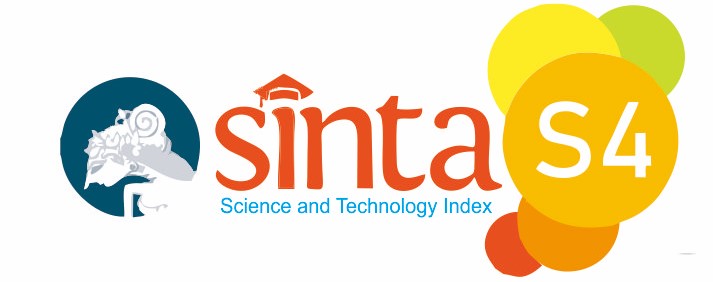KEMAMPUAN BERPIKIR KRITIS SISWA PADA MATERI LARUTAN PENYANGGA MENGGUNAKAN METODE PRAKTIKUM VIRTUAL
Abstract
Basically, students had critical thinking skills in learning such as questioning, hypothesizing, clarifying, observing, and interpreting. In fact, these skills sometime were not developed well, so it was needed a method that was able to develop student critical thinking skills. This research aimed at analyzing student critical thinking ability through virtual practical work method. It was conducted in the eleventh grade of Natural Science one at Islamic Senior High School of Yaspika Karimun. Descriptive method was used in this research with one shot case study design. The samples were one of two classes, and Purposive sampling technique was used in this research. Instruments of this research were essay test and observation sheet. The data analysis results showed that the mean percentage of critical thinking ability of the eleventh-grade students of Natural Science 1 at Islamic Senior High School of Yaspika Karimun on Buffer Solution lesson was 74.34% with good category for test instrument, and the mean percentage of observation sheet instrument was 76.67% with good category. Based on these findings, it could be concluded that student critical thinking skills with Virtual Practical Work method on Buffer Solution lesson was on good category.
Keywords : Critical Thinking Ability, Virtual Practical Work Method, Buffer Solution
Full Text:
PDFReferences
Afrianis, N., Binadja, A., & Susilaningsih, E. (2017). Peningkatan keterampilan berpikir kritis siswa dengan menggunakan model inkuiri terbimbing bervisi SETS. Konfigurasi, 1(2), 203-210.
Argandi, R., Martini, K. S., & Saputro, A. N. C. (2013). Pembelajaran kimia dengan metode inquiry terbimbing dilengkapi kegiatan laboratorium real dan virtual pada pokok bahasan pemisahan campuran. Jurnal Pendidikan Kimia, 2(2), 44-49.
Gunawan, G., Nisrina, N., Suranti, N. M. Y., Herayanti, L., & Rahmatiah, R. (2018, November). Virtual laboratory to improve students’ conceptual understanding in physics learning. In Journal of Physics: Conference Series (Vol. 1108, No. 1, p. 012049). IOP Publishing.
Herga, N. R., Čagran, B., & Dinevski, D. (2016). Virtual laboratory in the role of dynamic visualisation for better understanding of chemistry in primary school. Eurasia Journal of Mathematics, Science and Technology Education, 12(3), 593-608.
Hikmah, N., Saridewi, N., & Agung, S. (2017). Penerapan laboratorium virtual untuk meningkatkan pemahaman konsep siswa. EduChemia (Jurnal Kimia dan Pendidikan), 2(2), 186-195.
Kartimi, L., & Permanasari, A. (2012). Pengembangan alat ukur berpikir kritis pada konsep senyawa hidrokarbon untuk siswa SMA di Kabupaten Kuningan. Jurnal Pendidikan MIPA, 13(1), 18-25. Khaeruman, K., Darmatasyah, D., & Hulyadi, H. (2017). The Development Of Chemistry Virtual Laboratory On Colloidal System To Improve Generic Science Skills. Hydrogen: Jurnal Kependidikan Kimia, 5(2), 84-93.
Muttaqin, M., Simarmata, J., Subakti, H., Abi Hamid, M., Tamrin, A. F., Mahartika, I., ... & Purwanti, E. (2023). Digital Learning. Yayasan Kita Menulis.
Rusyna, A. (2014). Keterampilan berpikir. Yogyakarta: Ombak.
Wati, S. T. H., Utomo, S. B., & Ashadi, A. (2014). Studi Komparasi Media Virtual Dan Riil Pada Pembelajaran Student Teams Achievement (Stad) Materi Larutan Elektrolit Dan Nonelektrolit Ditinjau Dari Sikap Ilmiah Terhadap Prestasi Belajar Siswa Di SMA Negeri 7 Surakarta Tahun Pelajaran 2013/2014. Jurnal Pendidikan Kimia, 3(4), 17-23.
DOI: http://dx.doi.org/10.24014/jcei.v2i1.21650
Refbacks
- There are currently no refbacks.

Journal of Chemistry Education and Integration
E-ISSN: 2829-1921 | P-ISSN: 2829-2774
Published By:
Department of Chemistry Education, Faculty of Tarbiyah and Teacher Training, Sultan Syarif Kasim State Islamic University, Riau
Mailing Address:
Jl. H.R Soebrantas Km. 15 No. 155 Kelurahan Simpang Baru Kecamatan Tuah Madani, Pekanbaru, Riau
email: jceipka@uin-suska.ac.id
Indexed By:
Journal of Chemistry Education and Integration is licensed under a Creative Commons Attribution 4.0 International License.






1.jpg)
.jpg)
.png)
.jpg)
.jpg)


